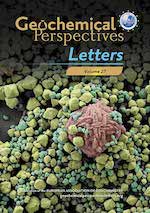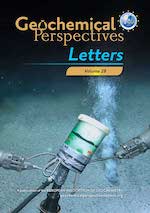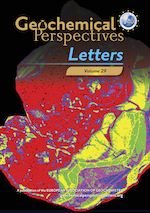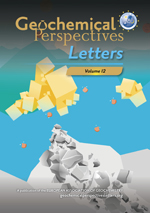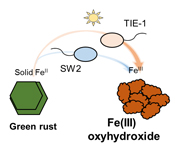 | Oxidation of green rust by anoxygenic phototrophic Fe(II)-oxidising bacteria Abstract: Green rust (GR) may have been a primary mineral phase during the deposition of Fe(III) (oxyhydr)oxides in Precambrian iron formations (IFs). However, the transformation pathways of GR into secondary mineral phases in IFs remain unclear. One potentially relevant mechanism on early Earth is anoxygenic phototrophic microbial oxidation of either dissolved Fe(II) or Fe(II)-bearing minerals that leads to the formation of Fe(III) (oxyhydr)oxides. It is currently unknown whether phototrophic Fe(II)-oxidisers can access lattice Fe(II) in GR. Here, we studied microbial Fe(II) oxidation of carbonate green rust by two anoxygenic phototrophic Fe(II)-oxidising bacteria, Rhodobacter ferrooxidans SW2 and Rhodopseudomonas palustris TIE-1. We found that these two species could oxidise GR to a short range ordered Fe(III) oxyhydroxide, likely ferrihydrite, with faster GR oxidation rates by SW2 than by TIE-1. These results suggest that anoxygenic phototropic Fe(II) oxidation of GR can contribute to the formation of Fe(III) (oxyhydr)oxides and thus, this process could have been an important mechanism for Precambrian IFs deposition in ancient oceans. |
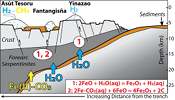 | Redox transfer at subduction zones: insights from Fe isotopes in the Mariana forearc Abstract: Subduction zones are active sites of chemical exchange between the Earth’s surface and deep interior and play a fundamental role in regulating planet habitability. However, the mechanisms by which redox sensitive elements (e.g., iron, carbon and sulfur) are cycled during subduction remains unclear. Here we use Fe stable isotopes (δ56Fe), which are sensitive to redox-related processes, to examine forearc serpentinite clasts recovered from deep sea drilling of mud volcanoes formed above the Mariana subduction zone in the Western Pacific. We show that serpentinisation of the forearc by slab-derived fluids produces dramatic δ56Fe variation. Unexpected negative correlations between serpentinite bulk δ56Fe, fluid-mobile element concentrations (e.g., B, As) and Fe3+/ƩFe suggest a concomitant oxidation of the mantle wedge through the transfer of isotopically light iron by slab-derived fluids. This process must reflect the transfer of either sulfate- or carbonate-bearing fluids that preferentially complex isotopically light Fe. |
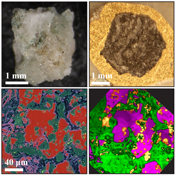 | Metamorphic evolution of carbonate-hosted microbial biosignatures Abstract: Microbial biosignature assemblages captured within mineral substrates experience extreme pressures (P) and temperatures (T) during rock burial and metamorphism. We subjected natural microbial biofilms hosted within thermal spring carbonate to six high pressure, high temperature (HPHT) conditions spanning 500 and 800 MPa and 200 to 550 °C, to investigate the initial petrographic transformation of organic and inorganic phases. We find biogenic and amorphous silica mineralises increasingly mature organic matter (OM) as temperature and pressure increase, with OM expelled from recrystallised calcite at the highest HPHT, captured within a quartz phase. Sulfur globules associated with microbial filaments persist across all HPHT conditions in association with microbially-derived kerogen. These data demonstrate how microbial material captured within chemically-precipitated sediments petrographically evolves in high grade rocks during their first stages of transformation. |
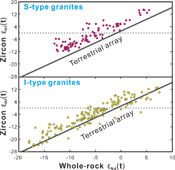 | Hafnium isotopic disequilibrium during sediment melting and assimilation Abstract: Identification of juvenile and mature crustal sources in granite formation relies on radiogenic isotopic systems such as Sm-Nd and Lu-Hf and assumes isotope systems reach equilibrium between the melt and residual phases prior to melt extraction. However, we hypothesise disequilibrium melting and residual zircon result in preferential retention of 177Hf in residues, generating partial melts with higher 176Hf/177Hf ratios. To test this hypothesis, we evaluate radiogenic isotopic signatures of strongly-peraluminous granites from the Chinese Altai. These granites show Nd-Hf isotopic decoupling and inherited zircons with negative ɛHf(t) values providing evidence for incomplete Hf release. This is consistent with the significant depletions in Zr and Hf. The Chinese data compilation shows that strongly-peraluminous and calcic to calc-alkalic, magnesian metaluminous or ferroan peraluminous (often respectively referred to as S- and I-type) granites show elevated ɛHf(t) relative to the terrestrial Hf-Nd isotopic array. Hf isotope disequilibrium marked by the preferential release of radiogenic Hf is likely ubiquitous during anatexis of zircon-rich protoliths. |
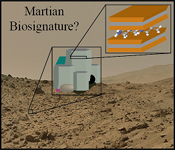 | Experimental clues for detecting biosignatures on Mars Abstract: Forthcoming exploration of Mars aims at identifying fossil biosignatures within ancient clay-rich formations. The subsurface of Mars has mostly acted as a giant freezer for the last 4 Gyr, thereby preserving potential remains of martian life. Yet, volcanism and impactors have periodically triggered the circulation of hydrothermal fluids, inevitably causing alteration of potentially fossilised biogenic organic materials. It thus appears crucial to quantify the impact of hydrothermal processes on organic biogeochemical signals in the presence of clay minerals. Here, we submitted RNA to hydrothermal conditions in the presence of Mg-smectites. Results show heterogeneous organo-mineral residues, with sub-micrometric phosphates, carbonates and amorphous silica particles together with Mg-smectites with interlayer spaces saturated by N-rich organic compounds. Although the chemical structure of RNA did not withstand hydrothermal conditions, clay minerals efficiently trapped organic carbon, confirming the relevance of drilling for organic carbon in ancient martian sediments. In addition, the degradation of RNA in the presence of Mg-smectites led to the precipitation of a quite uncommon mineral assemblage that could be seen as a biosignature per se. Martian targets exhibiting this mineral assemblage will thus constitute high priority and highly relevant candidates for sample return. |
 | Corrigendum to “Experimental evidence for fluid-induced melting in subduction zones” by Rustioni et al., 2019 |
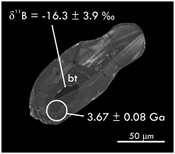 | Formation of Archean continental crust constrained by boron isotopes Abstract: The continental crust grew and matured compositionally during the Palaeo- to Neoarchean through the addition of juvenile tonalite-trondhjemite-granodiorite (TTG) crust. This change has been linked to the start of global plate tectonics, following the general interpretation that TTGs represent ancient analogues of arc magmas. To test this, we analysed B concentrations and isotope compositions in 3.8-2.8 Ga TTGs from different Archean terranes. The 11B/10B values and B concentrations of the TTGs, and their correlation with Zr/Hf, indicate differentiation from a common B-poor mafic source that did not undergo addition of B from seawater or seawater-altered rocks. The TTGs thus do not resemble magmatic rocks from active margins, which clearly reflect such B addition to their source. The B- and 11B-poor nature of TTGs indicates that modern style subduction may not have been a dominant process in the formation of juvenile continental crust before 2.8 Ga. |
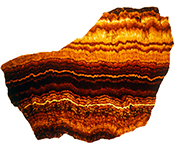 | Orbitally forced sphalerite growth in the Upper Mississippi Valley District Abstract: Groundwater plays an important role in global water cycles and Earth’s climate system. Nevertheless, the geologic history of groundwater activity remains unclear due to limited data. Sphalerite colour banding in the Upper Mississippi Valley District (USA) is apparently caused by variation in oxidation state during precipitation which is controlled by the penetration of deeply circulating groundwater. Here, time series analysis of the grayscale profile of the Permian sphalerite banding in this district shows the banding correlates with Earth’s eccentricity, obliquity, and precession forcing. We have found that the astronomical forcing paced the fluxes of heat and precipitation and regulated the penetration of groundwater into the ore zone and thus the sphalerite banding. The results demonstrate that banding in sphalerite follows the Milankovitch climate frequencies over 104 – 105 years. Therefore, we show that groundwater has a major role in depositing the iron-rich bands of the sphalerite and, as a final corollary, that the banding itself can be used to decipher the effects of climate on groundwater variations in the global water cycle. |
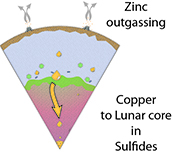 | The effect of core segregation on the Cu and Zn isotope composition of the silicate Moon Abstract: Compared to elements of similar volatility, such as Rb, Ga and K, the bulk silicate Moon (BSM) exhibits significant enrichment in the heavy isotopes of Zn and Cu. However, both elements display a greater affinity for lunar sulfide phases than the other volatiles, suggesting their isotopic abundance in the BSM may also reflect their sequestration to the lunar core. Experimentally determined Cu and Zn isotopic fractionation between liquid metal, sulfide and silicates reveals carbon-bearing iron melts to be isotopically heavier than the silicate melt, and sulfide melts the lightest. During sulfide sequestration from a cooling lunar magma ocean, Cu, unlike Zn, partitions strongly into sulfides (100 < DCuSulfide/Melt < 200), leaving the BSM both elementally depleted in Cu, and isotopically heavier. Sulfide sequestration therefore explains the larger offsets in the Cu isotope compositions of lunar rocks and the silicate Earth relative to other moderately volatile elements. The lunar Zn isotopic inventory is best explained by volatility driven surface processes. Irrespective of the elemental loss mechanism, the Cu isotopic content of the BSM rules out carbon as a significant light element of the lunar core. |
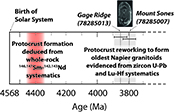 | Hadean protocrust reworking at the origin of the Archean Napier Complex (Antarctica) Abstract: The origin of the first continents is still poorly constrained due to the great scarcity of >3.7 Ga rocks. The Napier Complex (East Antarctica) hosts such rocks but the extreme metamorphic conditions it experienced have compromised most isotopic systematics. Here we have studied Mount Sones and Gage Ridge orthogneisses from the Napier complex using microbeam (LA-MC-ICP-MS) U-Pb and Lu-Hf isotope measurements in zircon, together with 146,147Sm-143,142Nd isotope systematics in the corresponding whole rocks to uncover primary information about their origin. Our U-Pb results reveal that these orthogneisses formed at 3794 ± 40 and 3857 ± 39 Ma, respectively, by reworking of 4456-4356 Ma mafic protocrust, as testified to by 176Lu-176Hf and 147,146Sm-143,142Nd systematics. Other Eoarchean terranes in Greenland, Canada, and China also show involvement of Hadean crust(s) in their formation which suggests that protocrusts were massively reworked to form new continents around the Hadean-Eoarchean boundary. Such a mechanism would account for the absence of early-formed protocrust from the geological record despite recent models proposing rapid crustal growth in the Hadean (~25 % of present day volume or surface). |
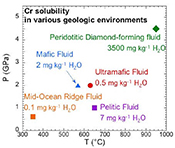 | Mobility of chromium in high temperature crustal and upper mantle fluids Abstract: Chromium is mobile in ultramafic magmas but its mobility in high temperature fluids has long been unclear. Studies of some chromium-rich ophiolites have suggested chromium mobility in upper mantle fluids. However, the mechanism is poorly understood because Cr(III) is so insoluble in water. We used previous estimates of aqueous Cr species and published experimental and ab initio studies of the solubility of Cr2O3 in HCl and KCl fluids at 500–1200 °C and 0.1–6.0 GPa together with the Deep Earth Water Model to calibrate a thermodynamic equation of state for the Cr(II) complex CrCl(OH)0. Our model predicted low Cr solubilities (0.1 mg kg-1 H2O) in a mid-ocean ridge fluid and very high solubilities (3500 mg kg-1 H2O) in saline, peridotitic diamond-forming fluid consistent with expectations for these environments. In pelitic, mafic eclogitic, and serpentinite fluids, predicted Cr solubilities varied widely depending on the oxygen fugacity and Cl concentration. The predicted predominance of Cr(II) in deep fluids and Cr(III) in minerals suggests that precipitation of Cr mineral components is a redox reaction. |
<< Previous issueNext issue >>


